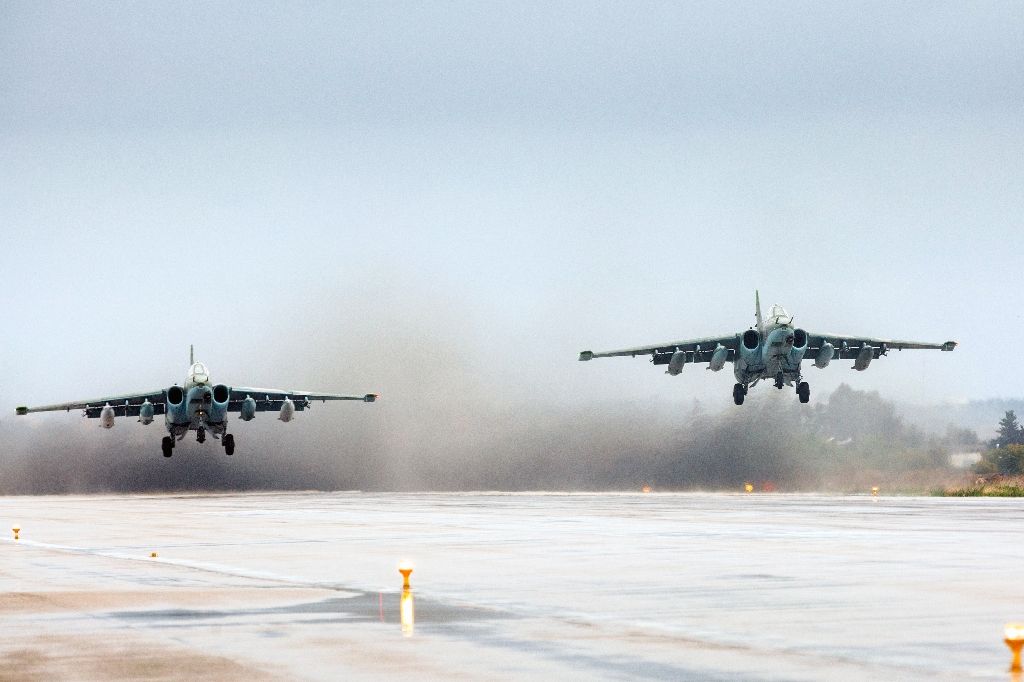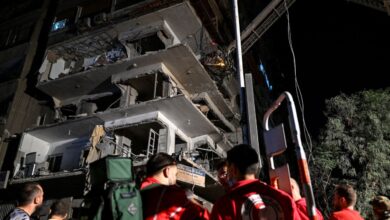
A Russian fighter flew dangerously close to a US warplane over eastern Syria, US defence officials said Friday, highlighting the risks of a serious mishap in the increasingly crowded airspace.
The "near miss" occurred late on October 17, when a Russian jet that was escorting a larger spy plane manoeuvred near an American warplane, Air Force Lieutenant General Jeff Harrigian said.
The Russian jet came to "inside of half a mile" of the US jet, he added.
Another US military official, speaking on condition of anonymity, said the American pilot was buffeted by the turbulence from the Russian jet's engines.
"It was close enough you could feel the jet wash of the plane passing by," the official said.
It appeared the Russian pilot had simply not seen the US jet — either on radar or visually. It was dark and the planes were flying without lights.
"I would attribute it to not having the necessary situational awareness given all those (planes) operating together," Harrigian said.
The incident raises serious questions about the extent to which pilots can track the complex airspace they operate in.
– Hotline to Russia –
Fearing a mishap, the US-led coalition last year set up a hotline with Russian counterparts to discuss the approximate locations and missions of planes.
In this case, the American pilot tried unsuccessfully to reach the Russian jet via an emergency radio channel.
The next day, US officers used the hotline to ask Russia what had happened, and they said "the pilot didn't see" the American plane, the official said.
The rate of close calls has increased over the past six weeks, Harrigian said, with Russian jets intentionally flying close to a coalition plane every 10 days or so.
"An intercept would be when an aircraft rolls in behind one of our aircraft. Could be a tanker, could be a B-52" bomber, Harrigian said.
US officers typically contact the Russians afterward.
We'll "make sure they know we are concerned about that and try to get an understanding of why they felt the need to do it," Harrigian said.
"Typically, it's not a very satisfying answer."
Coalition planes and drones operate in the skies over parts of Syria on a near-continuous basis.
That air traffic will grow heavier still as coalition-backed forces ramp up operations to recapture Raqa, the de-facto capital of the Islamic State group's "caliphate".
Further complicating matters, Turkish and Syrian regime warplanes fly in the same air space too.
Russia conducts frequent air patrols over Syria, the vast majority of them over the devastated city of Aleppo, and routinely transits parts of the country the US-coalition operates in, officials said.
Russia says it has not bombed Aleppo since October 18.
The Pentagon periodically chides Russia for "unsafe and unprofessional behaviour" in air operations and aggressive intercepts.
This latest incident was deemed unsafe, but not necessarily unprofessional, officials said.
Coalition spokesman Colonel John Dorrian, in a videoconference from Baghdad Friday, said the coalition did not assess the incident as "something that was done with nefarious intent".
"Therefore they've continued discussing that incident, and those deconfliction calls continued to be conducted on a daily basis," Dorrian said.




